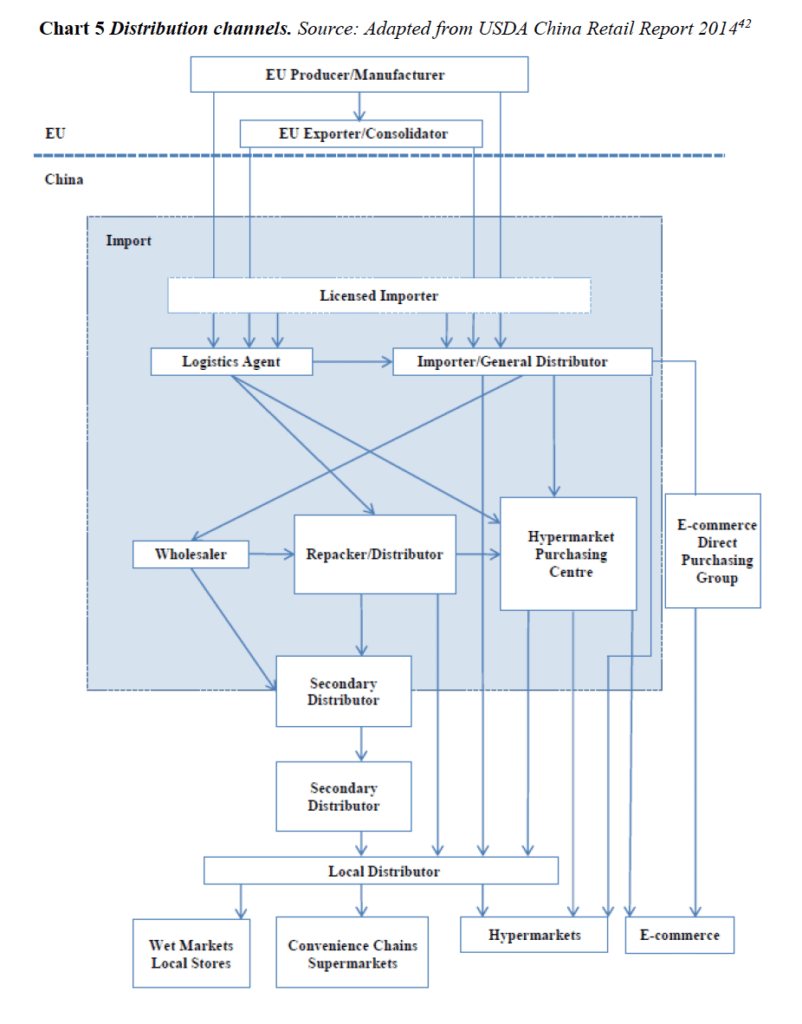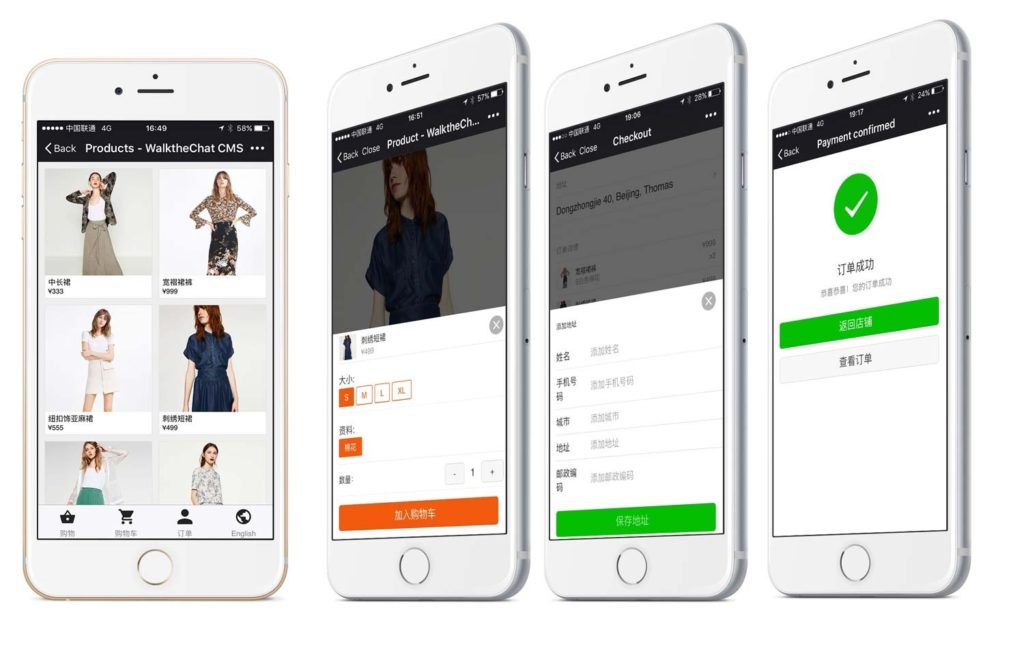-
The Chinese market for imported food
Why should you care about exporting your F&B business to China?
Well, first of all, China is the largest Food And Beverage market in the world. It surpassed the U.S in 2011, reaching 560 billion USD in 2014.
The Chinese F&B market is also increasingly looking at foreign brands as a source of quality and trustworthy products, following a string of food safety scandals over recent years in China. A 2012 Pew survey found that 41% of Chinese people were deeply concerned about food safety, compared to just 12% four years earlier.
This trend is reflected in the numbers: China Food and Beverage import market is expected to increase more than 15% annually, and its projected valued by 2018 will be 71 billion USD.
But the first question you might ask is… What do Chinese customers want?
-
What do the Chinese customers want?
According to the Australian Trade and Investment Commission, the following food categories are the most sought for by Chinese customers:
- Milk powders (infant formula & adult milk powder), milk products, cheese and butter
- Seafood (especially saltwater shell fish such as oysters, crabs, lobster and abalone)
- Fresh fruits
- Processed foods
- Wheat and barley
- Chilled or frozen meat
- Baby food products
- Wine and beer
- Convenience and ‘instant’ foods
- Natural fruit juice
- Confectionery and snack products
- Condiments
The top products such as baby food or milk powders are the ones which were at the center of food safety scandals in China. Seafood is also a major import, as it occupies a pivotal role in Chinese consumption patterns, especially during traditional festivals.
-
Selling F&B in China online
You can try to sell to China using traditional distribution channels. However, if you take this path, things might very well get very very complicated very fast.
Here is a typical distribution chain in China. It is not simple.

Source: EU-SME Center
That’s a lot of stakeholders to handle in an extremely complex linguistic, cultural and regulatory context. The solution to this: sell directly to end customers via cross-border e-commerce channels
There are two ways you can attempt cross-border e-commerce in China.
Method 1: Direct & Social selling
This means selling outside an existing marketplace. You will have to generate your own traffic, most likely by partnering with bloggers.
This is the most efficient way to get started if you don’t have existing search volume or brand recognition. You can set-up your e-shop through WalktheChat’s cross-border e-commerce platform (disclaimer: I work for WalktheChat)
In general, whichever path you choose, there are rules to designing for China:
- Enabling Chinese payment methods (we integrate WeChat payment cross-border and Alipay Cross-border)
- Using WeChat and other Chinese services for log in, in order to smoothen the user experience
- Ensuring that speed is optimal in China
- Having a mobile-first approach as most of the WeChat social traffic is happening through mobile devices
- Following Chinese design and UX guidelines from Tencent and other leading local tech companies for so that users feel safe (trust is a huge barrier to purchase in China)

Example of China-friendly design
Option 2: marketplaces
There are plenty of marketplaces which enable foreign companies to sell in China.
- Tmall cross-border: it is the largest cross-border platform and is part of the Alibaba group. You’ll find everything on it from cosmetics to clothing
- JingDong (JD) global: JD is Alibaba’s main competitor. It is a better fit for companies selling consumer electronics
- Jumei cross-border: Jumei is a booming platform for sale of cross-border cosmetics and beauty products
- XiaoHongShu: is another up-and-coming platform, which started as a content sharing platform and is now focusing on the cross-border sale of luxury items
These platforms have pro’s and con’s:
- Pros: they have pre-existing traffic and can help with the whole logistic / customer side of business (including returns, etc…)
- Cons: most of these platforms will require your company to make at least $100 million in annual revenue to even let you apply for them. It’s a brutal selection process and only companies which are already famous in China have a chance to get through
Summary for China e-commerce market entry:
- If you are an existing brand with more than 100 million USD of annual sales and existing search volume, go for the big cross-border marketplaces. You might have to put around 1M USD on the table to really see results, but you have a good chances of making your money back multiple times
- If you are an SME trying to break into the Chinese market, go through social e-commerce via Key Opinion Leader (KOL) campaigns which will enable you to get started at a much more affordable cost. You can use WeChat cross-border platformsto get started.
-
Taxes, customs and shipping
Taxes and customs can be a hassle for new companies trying to enter China. To avoid the complexity of the matter, many companies get started with directly shipping parcels to end users, which prevents much of the red tape associated with registering a company and brand in China.
In order to take your China supply-chain to the next stage, you might want request the services of companies specialized in cross-border shipping and custom clearance.
Australia
https://www.startrack.com.au/
http://www.blueskyexpress.com.au/
Europe
http://www.ufreight.com/
https://www.hermesworld.com/
http://www.b2ceurope.eu/
US
http://www.ufreight.com/
http://www.mxhaitao.com/
http://www.athaitao.com/
http://www.giantus.com/
-
How to get started?
Entering the Chinese market can be a risky move if it isn’t done right. We generally encourage companies to first “dip their toe” running a few test campaigns on a proprietary cross-border store.
After having validated customer demand through sales, you can then start taking a more ambitious approach to investment, for instance by setting up a legal structure such as a WFOE in China in order to be able to hire local staff and expand distribution.
In the meantime, there are a few steps you can take to get started:
- Create a shop on WalktheChat’s cross-border e-commerce platform: it will enable you to start listing your products on your own cross-border store
- Reach out if you have questions info@walkthechat.com
- If you want to learn more about social e-commerce in China, sign-up to our 5-days e-mail course teaching you “How to Sell to Chinese Users via WeChat”
Sign up for our 5 days e-mail course now:

